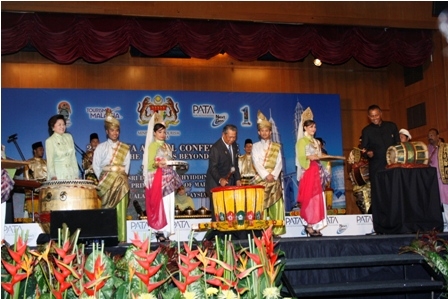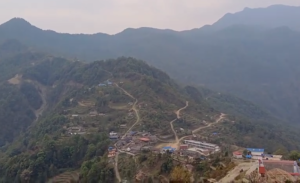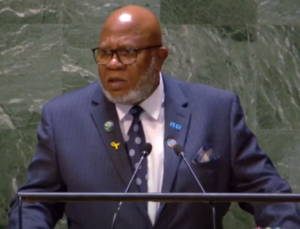PATA Annual Conference 2012 : “Building the Business Beyond Profits”

PATA Annual Conference 2012
“Building the Business Beyond Profits”
PATA Embracing
Next Generation Technology
By Ramesh Tiwari
Pacific Asia Travel Association (PATA) has repositioned itself to face the challenges of the next generation through its Next Gen initiative in the Annual Conference held in Kuala Lumpur recently. PATA Annual Conference focused on accelerating travel and tourism in Asia-Pacific countries and sustainable development in the tourism industry worldwide.
The 2012 PATA Annual Conference addressed the theme “Building the Business Beyond Pro-fits,” which featured some of Asia’s more conscientious entrepreneurs sharing their successful social entrepreneurship business models and principles. As quoted by the Co-founder of MYC4 ‘Business must be for pro¬fit but profi¬t must also be for purpose ‘. PATA focused on strong advocacy on corporate social responsibility to support its sustainable mission.
The United Nations World Tourism Organization (UNWTO), in its forecast of international tourist arrivals reaching 1 billion tourists by 2012, and 1.8 billion by 2030, has indicated that the international tourist arrival will increase in Asia and the Pacific region in the coming years. Asia and Pacific countries will have an increased share of the global tourist market from 22% in 2011 to 30% in 2030.
A total of 217 million international tourists visited the Asia Pacific region in 2011.
South and Northeast Asia will be the fastest-growing regions in 2012, growing by 6.7 percent, driven by countries such as India and China where rising incomes will generate an increase in domestic tourism spend and capital investment, and recovery in Japan according to research by the World Travel & Tourism Council (WTTC).
Deputy Prime Minister of Malaysia Tan Sri Dato ‘ Muhyiddin Bin Mohd Yassin ,declaring open the 2012 Pacific Asia Travel Association (PATA) Annual Conference on 21 April ,2012 at the The Royale Chulan in Kuala Lumpur ,highly evaluated the 61-year association for its role and contribution in developing the tourism industry.
“The growth of tourism in the Asia and Pacific countries, and in Malaysia, has, no doubt, been contributed to some large extent, by the efforts of PATA who early on, saw the potential for tourism growth in the area,” said Tan Sri Muhyiddin.
The Deputy PM said Malaysia recognizes tourism as one of its 12 main economic pillars. Malaysia is fortunate to have its fair share of the global tourism market. Malaysia received 24.7 million tourists in 2011 where as the number of international tourists was 7 million tourists in 1999.
Tourism is the seventh largest industry contributing to the Gross National Income (GNI) after oil, gas and energy, wholesale and retail, palm oil and rubber, financial services, agriculture and electrical and electronics sectors in Malaysia.
“PATA’s next generation initiative is important for regional tourism strategies and building networks among PATA members. The concept of cultural conservation, which PATA believes in, is reflected in Malaysia’s slogan: Malaysia is Asia,” the Deputy PM said.
On the issue of climate change, DPM Muhyiddin urged PATA to take initiatives to address its adverse effects on the region’s natural attractions and tourism activities. Climate change is one of the biggest concerns of tourism these days, and the UNWTO has warned of its severe threats on tourism industries worldwide such as sea-level rise, loss of crop yields and extreme weather condition.
Dato’ Sri Dr. Ng Yen Yen, Malaysia’s Minister of Tourism in her address , said the 24.7 million arrivals in Malaysia in 2011, makes tourism the second-largest contributor to the country’s national income. She pointed out the global responsibility of tourism destinations to work and show responsibility in terms of environment.
Malaysia covers an area of 329,758 square kilometres and has a population of more than 27.5 million people. Bahasa Melayu, or Malay, is the national language but English is very widely spoken. Islam is the official religion of Malaysia, however all religions are freely practiced.
On the occasion, Minister Dato’ Sri Dr. Ng Yen Yen, received the PATA Honorary Life Member Award for her contributions to the tourism industry. The award was presented by outgoing PATA Chairman, Hiran Cooray during the opening ceremony of the 2012 PATA Annual Conference. She was Deputy Minister of Tourism, Malaysia, from 1999 to 2003, and is the Minister of Tourism from 2009 onwards.
Malaysia’s tourism performance reached new heights during her leadership as Tourism Minister. It saw an increase of tourist arrivals from 23.6 million tourists in 2009 to 24.7 million in 2011 and receipts surged from RM53.4 billion (USD17.8 billion) in 2009 to RM58.3 billion (USD19.4 billion).
Malaysia secured the 9th spot as most visited country in the world by UNWTO for three years in a row, from 2009 to 2011, an achievement that was made even more significant due to the challenges plaguing the global tourism industry during those years.
A medical officer by profession, she initiated the “1 Malaysia Green, 1 Malaysia Clean” campaign to promote conservation awareness; advocated for abolishment of import duties to brand Malaysia as a duty free destination; re-invigorated the homestay programme to encourage tourism participation and bring benefit to rural communities; encouraged creation and development of luxury tourism; explored new geographical tourism markets and niche tourism products.
She was instrumental in leveraging Malaysia as a luxury tourism destination, which included a focus on parks and gardens tourism, an initiative that saw Malaysia receiving the gold awards for its garden concept at the prestigious RHS Chelsea Flower Show in London for two years in a row (2010 and 2011).
Malaysia has aimed to achieve 36 million tourists and RM168 billion (USD56 billion) in receipts by 2020 through the Malaysian Tourism Transformation Plan.
Tourism Malaysia Acting Director-General, Dato’ Haji Azizan Noordin.noted , “Malaysia hosted the 2012 PATA Annual Conference again as it coincides with Tourism Malaysia’s 40th Anniversary. The conference is an excellent platform to showcase Malaysia as a premiere tourist destination and to promote our new products and facilities to the world.”
Malaysia hosted the PATA Annual Conference for the fourth time in 40 years. The country previously hosted PATA Conferences in 1972, 1986 and 2001. Tourism Malaysia has been an active Government member of PATA since 1965 alongside 80 member organizations in Malaysia.
Martin J Craigs, PATA CEO explained on PATA strategy of Next Gen at the grand opening ceremony of PAC-2012. PATA Next Gen expresses the association’s commitment to build business with all the new tools of the trade without losing our face-to-face friendships or sense of fun.
He noted,” PATA Next Gen is about mindset and the intelligent use of new/next generation technology – a new mindset that looks to digital solutions, brave advocacy and bold thought leadership events fully in tune with a social media age. “
PATA CEO Craigs committed the association to a four-year phase of “Next Generation” action to underpin the 61-year-old travel body’s relevance in the digital age. Craigs said aligned advocacy, mobile technology, business building events and crisis management readiness would define the association’s new operational mindset, which will be formally called PATA Next Gen.
“PATA Next Gen is ageless, neither old nor young. It is a state of mind, a commitment to speed, relevance, informality and getting things done on behalf of our members who want to build and defend their business in an increasingly competitive marketplace,” he opined.
Craigs highlighted on PATAmPOWER, the association’s new mobile platform for integrated travel intelligence, as a major proof point in PATA Next Gen delivery. PATAmPower presents the latest travel industry insights and statistics in a user-friendly visual format that PATA members can access on their mobile devices 24/7, as long as they have an Internet connection.
According to PATA officials, the conference proved an ideal platform for delegates comprising travel-related industry players, government and media leaders and officials to experience and acquire new tourism insights from a host of prominent international speakers.
Among the key topics covered over the conference were : PATA Next Generation ; Building the Business Beyond Profits – Leading in Challenging Times ; Opening New Horizons – Building Business Excellence ; The Social Entrepreneurs Challenge – PATA Next Gen Thought Leadership At Its Best and ASEAN 2015 – Great Expectations: 1 Vision, 1 Identity, 1 Community .
Leaders from dynamic emerging markets, the UNWTO, WTTC and PATA discussed on what needs to be done to raise the visibility of tourism with G20 political leaders and how such a repositioning could create new business opportunities all along the tourism value chain during the conference.
Experts provided a thought leadership overview on three strategic issues identified as hot button subjects – emerging markets, crisis management and new technology. ASEAN nations have pledged themselves to radical changes inherent in a large measure of economic union, scheduled for 2015.
Under the theme “Building the Business Beyond Profits,” the conference addressed a number of issues such as the need for sustainable tourism practices, socially responsible new business models, emerging markets, crisis management, new technology and the impact of ASEAN Economic Cooperation (due in 2015) on the tourism economy.
The delegates shared their successful social entrepreneurship business models and principles. Founder of G Adventures Bruce Poon Tip addressed the closing session on Building the Business Beyond Profits. G Adventures has grown to become a world leader in adventure travel, with offices around the world, offering small group experiences in over 100 countries to more than 100,000 travellers annually.
Different organizations and individuals were awarded with 2012 PATA Gold Awards by the Pacific Asia Travel Association (PATA) at the closing ceremony of the conference. The awards are supported and sponsored by the Macau Government Tourist Office (MGTO).
Some 27 PATA Grand and Gold Awards were presented this year, with multiple awards going to Hong Kong Tourism Board, Tourism Authority of Thailand and Tourism Malaysia.
Malaysia received three PATA Gold Awards in recognition of excellence, innovation, and the best tourism standards in Asia Pacific’s travel and tourism industry.
Two of the awards were won by Tourism Malaysia in the categories of Marketing – Primary Government Destination for its ‘A Million Experiences to Share’ campaign, and Marketing Media – Travel Poster for its posters depicting the Orang Utan, Diving, Mount Kinabalu, Homestay and SitiKhadijah Market.The third award was won by the Frangipani Langkawi Resort & Spa in the category ‘Environment – Educational Programme’ for the management of its waste water system.
PATA Grand Awards are presented to outstanding entries in four principal categories: Marketing; Education and Training; Environment; and Heritage and Culture.
The Grand Awards recipients were the Lao National Institute of Tourism and Hospitality, for Education and Training; Tourism Authority of Thailand for Environment; Heritance Tea Factory, Sri Lanka for Heritage and Culture; and Tourism New Zealand for Marketing.
A CD-Rom (CD) – “Naturally Nepal “prepared by Nepal Tourism Board was awarded Gold Award under Marketing Media category. Director of Nepal Tourism Board Aditya Baral received the PATA Award on behalf of NTB at the Kuala Lumpur conference.
The PATA Annual Conference elected Director of Macau Government Tourist Office Joao Manuel Costa Antunes as the new President of PATA.
PATA also held the Annual General Meeting, the PATA Chapter Colloquium, the PATA Board & Category Committee meetings, the 2012 PATA Gold Awards luncheon, and PATA Foundation fund raising activities during the conference.
Hosted by the Ministry of Tourism, Malaysia and Tourism Malaysia, the 2012 PATA Annual Conference,held on 19-22 April 2012 at the Royale Chulan Kuala Lumpur, brought together delegates from all areas of travel and tourism including most acclaimed entrepreneurs of the region.
A total number of 618 delegates including PATA members and tourism professionals from across the Asia Pacific travel industry participated at the Kuala Lumpur conference. There were 330 international delegates, 288 local delegates and 107 journalists representing 38 countries and regions along with more than 188 organizations.
The media representatives from different Asia-Pacific countries visited Putrajaya and Melaka state of Malaysia. An “Intelligent Garden City” and the federal administrative capital of Malaysia, Putrajaya is a showcase city some 30 km south of the capital Kuala Lumpur.
Putrajaya is the new Administrative Centre of the Federal Government of Malaysia. The development of Putrajaya marks a new chapter in the history of modern city planning in Malaysia. It is set to be a model garden city with sophisticated information network base on multimedia technologies.
According to the officials, Putrajaya will become a vital development catalyst due to the role it will assume as a model city – as the nerve centre of the nation and an ideal place to live, work, conduct business and engage in sports and recreational activities.
About 40 per cent of Putrajaya is natural and greenery, botanical gardens are spread across the landscape enhanced by large bodies of water and wetlands. Five confluences meet at the north forming a main waterway which flows across the city area.
Likewise, Melaka city is located on the west coast of the Malay Peninsula, facing the Straits of Malacca, about 147 kilometers from Kuala Lumpur, Malaysia between the states of Negri Sembilan and Johor. The modern city covers about an area of 658 square kilometers.
Melaka is one of Malaysia’s premier tourist destinations, with its unique heritage and a multitude of museums and delicious food.
Most of the international media highly evaluate the contribution and vision of Tourism Malaysia to make it a popular destination in the world tourism market.
PATA, established in 1951, is a membership association acting as a catalyst for the responsible development of the Asia Pacific travel and tourism industry. PATA enhances the sustainable growth, value and quality of travel and tourism to, from and within the region working in partnership with the private and public sector members.
(The writer, editor of Travel and Tourism News portal www.travelbiznews.com and former editor-in-chief of Gorkhapatra Daily of Nepal , participated at the PATA Conference held in Kuala Lumpur, Malaysia.)














